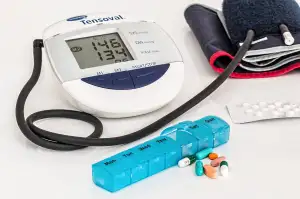Tuberous Breast Deformity: NHS Guide to Understanding and Treatment Options

- Definition of Tuberous Breast Deformity according to the NHS
- Symptoms and Signs of Tuberous Breast Deformity
- Causes and Risk Factors Associated with Tuberous Breast Deformity
- Diagnosis and Evaluation Methods Recommended by the NHS
- Treatment Options Available for Tuberous Breast Deformity under NHS Guidelines
- Support and Resources Offered by the NHS for Individuals with Tuberous Breast Deformity
Definition of Tuberous Breast Deformity according to the NHS
Tuberous Breast Deformity, also known as tubular breasts or constricted breasts, is a congenital condition where the breasts fail to develop normally during puberty. According to the NHS, this deformity is characterized by breasts that are narrow at the base with a higher than normal breast fold and often appear elongated or tube-like in shape. The condition can affect one or both breasts and may lead to asymmetry, herniation of breast tissue into the areola, and a lack of fullness in the lower portion of the breast.
Symptoms and Signs of Tuberous Breast Deformity
Symptoms and Signs of Tuberous Breast Deformity may include breasts that are unusually shaped, narrow at the base, with a higher than normal breast fold. The areolas may appear enlarged or puffy, and there may be a lack of breast tissue development in certain areas. Asymmetry between the breasts is common, with one breast being significantly smaller or differently shaped than the other. These physical characteristics can impact self-esteem and body image, leading individuals to seek medical evaluation and treatment options.
Causes and Risk Factors Associated with Tuberous Breast Deformity
Tuberous breast deformity is believed to be caused by a genetic predisposition that affects the development of the breast tissue during puberty. This condition is thought to occur due to an abnormality in the connective tissue within the breast, leading to restricted growth and shaping of the breasts. While the exact cause is not fully understood, hormonal imbalances during puberty have also been suggested as a contributing factor. Risk factors associated with tuberous breast deformity include a family history of the condition, hormonal fluctuations, and certain medical conditions affecting hormone levels.
Diagnosis and Evaluation Methods Recommended by the NHS
Diagnosis of Tuberous Breast Deformity typically involves a physical examination by a healthcare provider. Imaging tests such as mammograms, ultrasounds, or MRI scans may be recommended to assess the breast tissue and confirm the diagnosis. In some cases, genetic testing may be suggested to identify any underlying genetic factors contributing to the condition. A comprehensive evaluation is crucial for determining the severity of the deformity and developing an appropriate treatment plan tailored to individual needs. It is essential to consult with a qualified healthcare professional for an accurate diagnosis and personalized care.
Treatment Options Available for Tuberous Breast Deformity under NHS Guidelines
Treatment options available for Tuberous Breast Deformity under NHS guidelines may include surgery to reshape the breasts. This can involve procedures such as breast augmentation with implants, breast lift, or tissue expansion. In some cases, a combination of these techniques may be recommended to achieve the desired outcome. It is essential for individuals considering surgery to have a thorough consultation with a qualified plastic surgeon to discuss the risks, benefits, and expected results of each option before making a decision.
Support and Resources Offered by the NHS for Individuals with Tuberous Breast Deformity
Support and resources for individuals with Tuberous Breast Deformity are available through the NHS. Patients can access counseling services to address emotional concerns related to their condition. Additionally, support groups provide a platform for individuals to connect with others facing similar challenges, offering a sense of community and understanding. The NHS also offers information on available treatment options and guidance on navigating the healthcare system for optimal care.
Published: 13. 04. 2024
Category: Health



